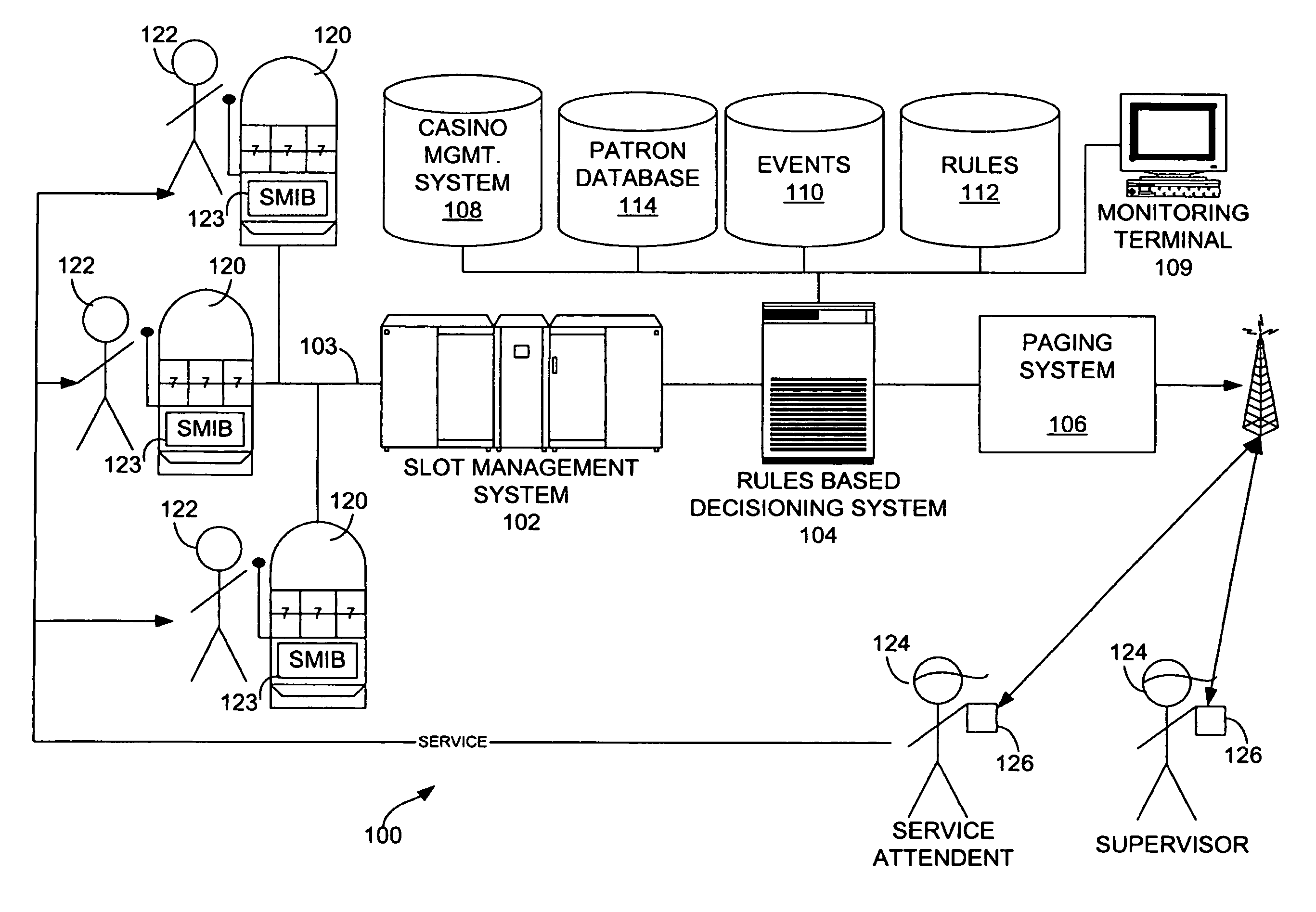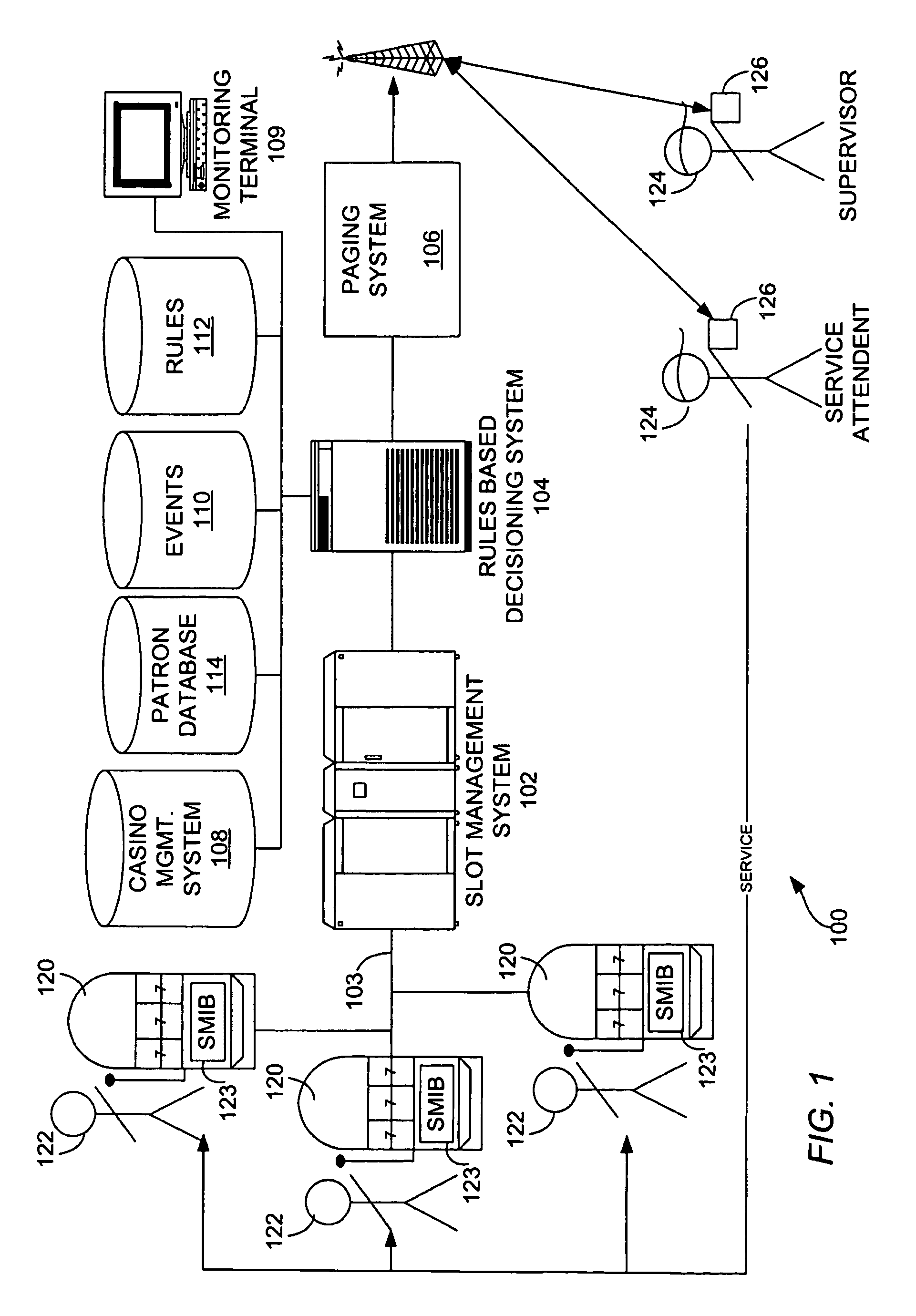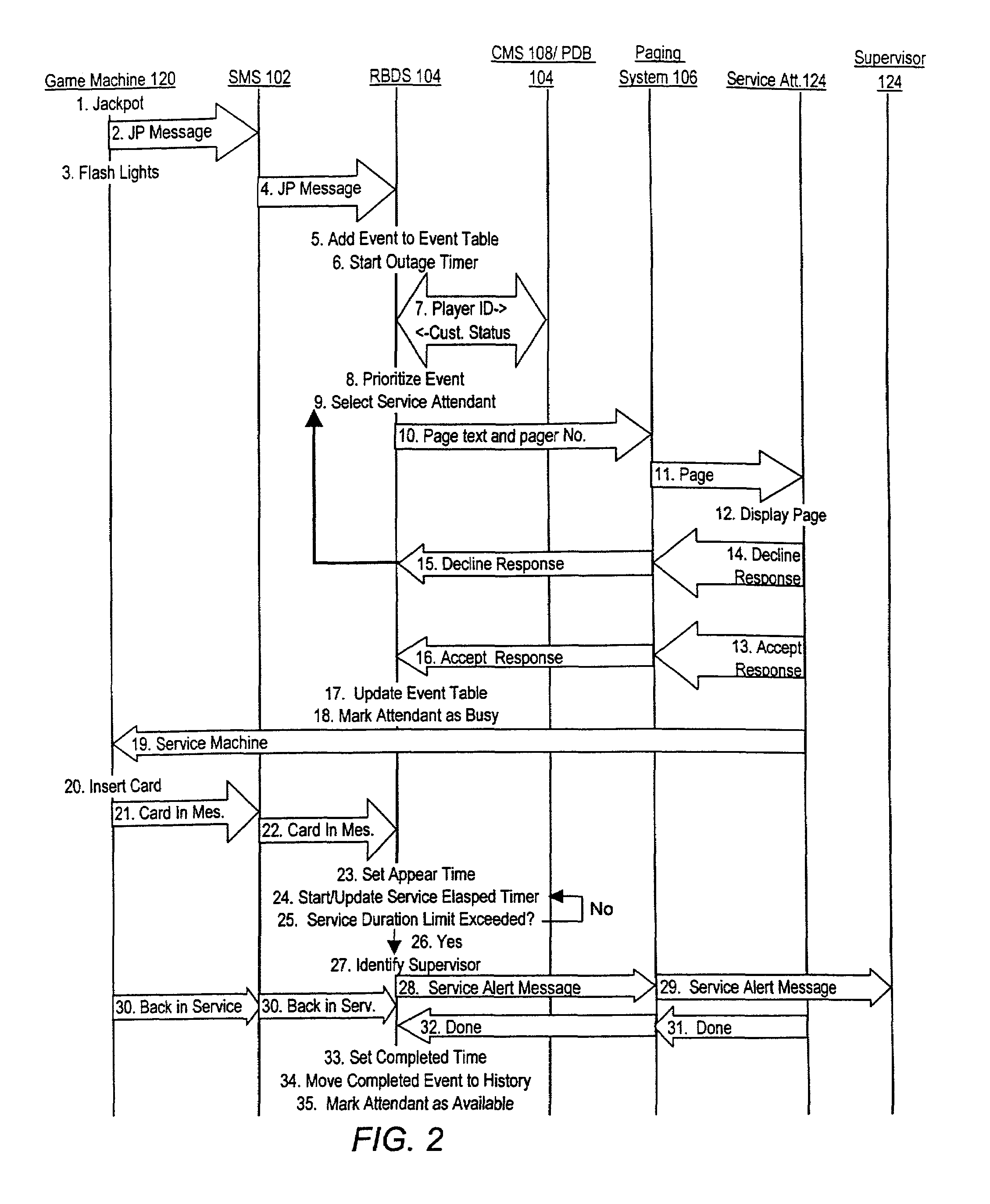Automated service scheduling system
a service scheduling and automatic technology, applied in the field of automatic service scheduling system, can solve the problems of haphazard, slow and unsatisfactory for players, and inability to determine which player needed service first, so as to achieve the effect of delivering premium value players more quickly
- Summary
- Abstract
- Description
- Claims
- Application Information
AI Technical Summary
Benefits of technology
Problems solved by technology
Method used
Image
Examples
Embodiment Construction
[0029]Referring now to FIG. 1, there is shown a system diagram of a system in accordance with one embodiment of the invention. This system 100 operates typically on the premises of a casino or other entertainment facility in which there are a large number of gaming machines 120. In a casino environment, there is provided a slot management system (SMS) 102, a decisioning system 104, a casino management system (CMS) 108, and a communication system 106. A patron database (PDB) 114 may be used instead of CMS 108. In non-casino environments, equivalent functionality of these systems, as further described below, may be provided through equivalent hardware or software systems. In the illustrated embodiment, the decisioning system 104 is a rules-based decisioning system (RBDS), and the system is described hereafter with respect to this particular implementation, though it should be understood that the invention is not limited to this particular type of decisioning system.
[0030]Generally, ev...
PUM
 Login to View More
Login to View More Abstract
Description
Claims
Application Information
 Login to View More
Login to View More - R&D
- Intellectual Property
- Life Sciences
- Materials
- Tech Scout
- Unparalleled Data Quality
- Higher Quality Content
- 60% Fewer Hallucinations
Browse by: Latest US Patents, China's latest patents, Technical Efficacy Thesaurus, Application Domain, Technology Topic, Popular Technical Reports.
© 2025 PatSnap. All rights reserved.Legal|Privacy policy|Modern Slavery Act Transparency Statement|Sitemap|About US| Contact US: help@patsnap.com



